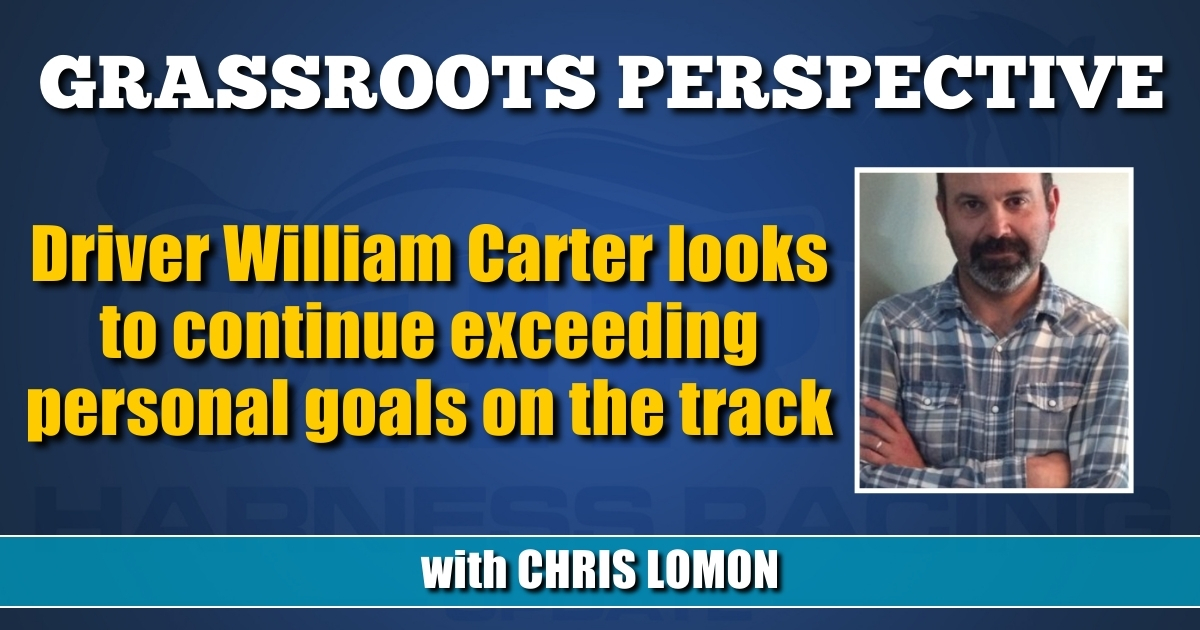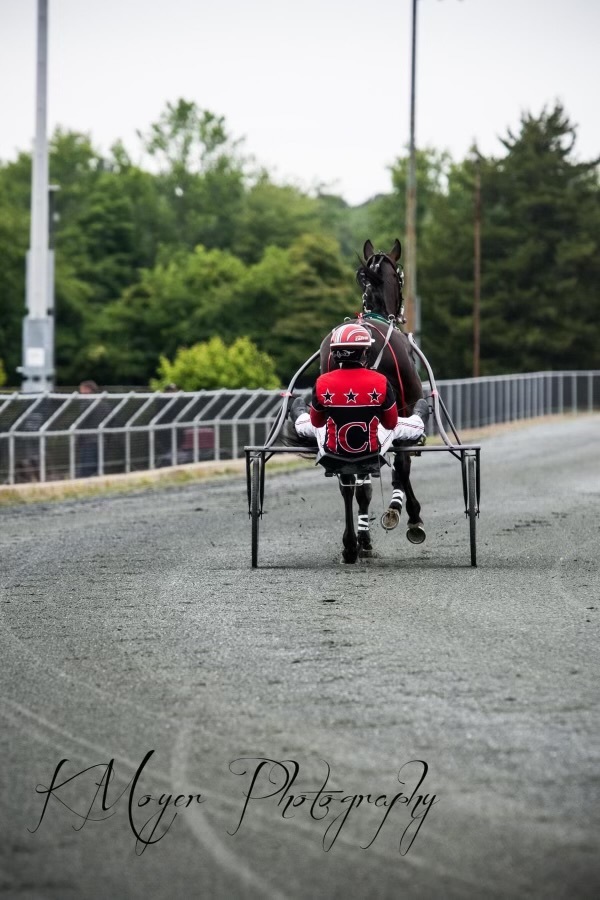Driver William Carter looks to continue exceeding personal goals on the track
by Chris Lomon
William Carter hasn’t yet been on target when it comes to reaching personal goals, but that isn’t a bad thing.
After a nine-win driving season in 2022, Carter, born and raised in Philadelphia, spent some time thinking about what he hoped to achieve the following year.
“I won 53 races in 2023, which was far above the 25 races I wanted to win,” Carter said. “I was very happy with how everything played out.”
Carter got off the wings quickly last year and carried that momentum throughout the season.
One highlight from 2023 was a four-win night as a “P” (probationary license) driver.
The other notable moment came in early September at Ocean Downs when Carter, a week after turning 19, won his first sires stakes race in Maryland with Rustys Baby Ruth.
Carter was impressed with the daughter of Rustys For Real well before her first official start.
“Her trainer is Elwood Tignor, who has been my dad’s friend for a long time,” Carter said. “They were on the phone and Elwood was going on about this filly. My dad said, ‘How about you let my son qualify her?’ So, I did, and I told Elwood she was pretty nice.”
After a second-place performance in her first start, Carter had loftier praise for the bay filly, bred and owned by Ashley Page.
Not a surprise considering the results of her next three races were all wins, including a brilliant effort in the $85,000 Sires Stakes final at Ocean Downs in September.
Rustys Baby Ruth prevailed by 3 lengths, from post 7, cutting the final quarter in a field-best :30.1 to stop the teletimer in 1:57.4.
“That was the first big race I had ever been in, so to be able to win that, it was a sigh of relief and a great feeling,” Carter said.
But not something to dwell upon.
Instead, Carter is dialed in on improving his skills in the race bike, with the hope of attracting more opportunities to compete in races like the sires stakes ranks and beyond.
One of the biggest challenges in his career, admittedly, has been learning to deal with a tough night at the racetrack.
“I’m sure a lot of young drivers go through the same thing, trying to turn the page after a bad drive or if the horse didn’t race as you expected it would,” he said. “You have to learn to turn the page and when I first started, I would get very frustrated with myself. I would let it stay with me for the rest of the card. Now, my focus is to learn from the last race and move on to the next one.”
Carter has also fine-tuned his driving approach.
“When I first started, I was very aggressive; a little overly aggressive out there,” he said. “I would sometimes pull horses at a time when I shouldn’t have, so I learned a lot last year. I have learned to be more patient and also when to go and when not to go.”
The result is a much more refined look and feel in the sulky.
If Carter does have any questions about his craft, he isn’t shy about reaching out to his contemporaries.
“The drivers who have been in the sport a long time always tell me that I can learn something new each day,” he said. “That is definitely true. When you come to the racetrack, you have to keep your mind open and your ears open. It’s important to listen and learn. I try to be respectful to everybody. I don’t want to come off as being cocky.”
He also has two other trusted go-to sources.
“My dad [longtime horseman Billy Carter] pretty much taught me everything that I know,” William said. “He drives horses and he shares some advice on things I can do to improve and things he sees that I am doing well.
“[Trainer and driver] Roger Plant is another person I go to if I have any questions about driving. He gives me a lot of good advice too.”
That William found a way into the sulky is no surprise.
Early on in his life, he figured he was odds-on to join the harness racing ranks.
“Growing up, I played baseball and basketball, but I always knew it was going to be horses,” William said. “From everything I can remember, it was always about horses. I can remember being really young and sitting on my dad’s lap while he was jogging a horse. I guess I was destined to be in horse racing.”
He was also destined to sport a similar look on the racetrack.
William’s driving colors are an homage to his father, with a twist.
“My colors are my dad’s colors,” William said. “We both have black and red, but where he has black, I have red and vice versa. We both have a “C” on the back.”
William is hopeful his objectives, both current and future, pay off with those colors co-featured in winner’s circle photos.
On the night of Feb. 20 at Rosecroft, he had his picture taken four times, winning races 2, 3, 4, and 13.
“In the short term, I want to get my name out there, but also stay humble and be myself,” William said. “Every driver has the same long-term goal, to win the big stakes races.”
There is one race at Rosecroft he has in his sights as well.
“I would love to be in and win the Potomac Pace,” he said. “That’s my home track, so I would love to say I won that race.”
Outside the goals he sets and life in the barn, William leads a mostly quiet but contented life.
Spending time with his friends is a top priority.
Not being preoccupied with thoughts of horses 24/7, however, is no easy task.
“When I get the time, I like to hang out with my friends and not think about horses, but that is tough,” William said. “I love horses, but sometimes, it’s nice to have a little time away. The funny thing is you do miss them when you are away from them. So, when I come in and see them again, it makes me happy.”
As does surpassing the numbers he’d like to achieve each year.
And even if he is a little off in his predictions, William has somehow managed to find the winning formula for success.


















